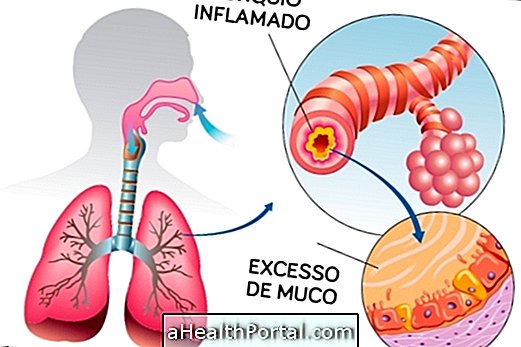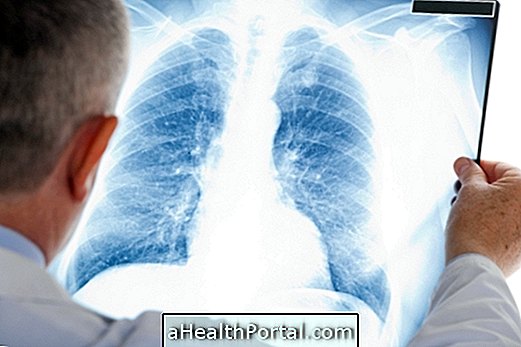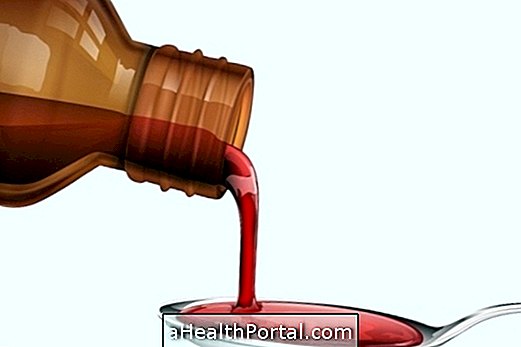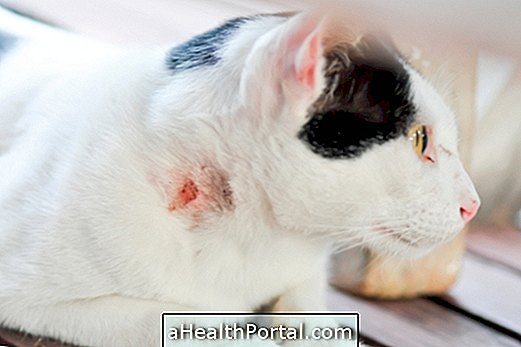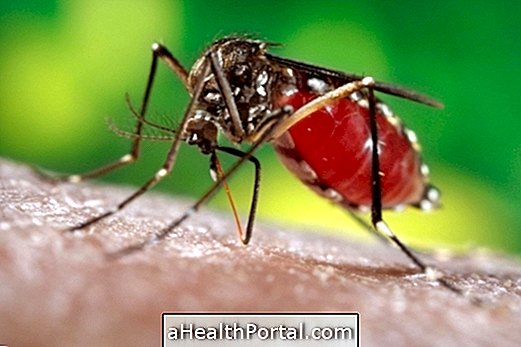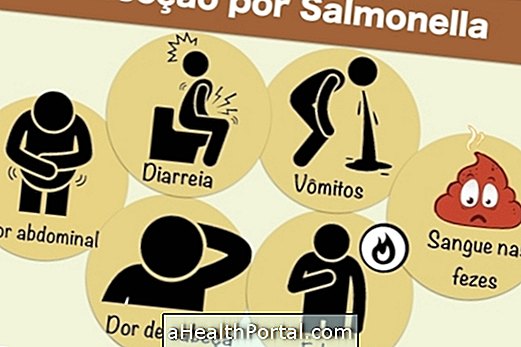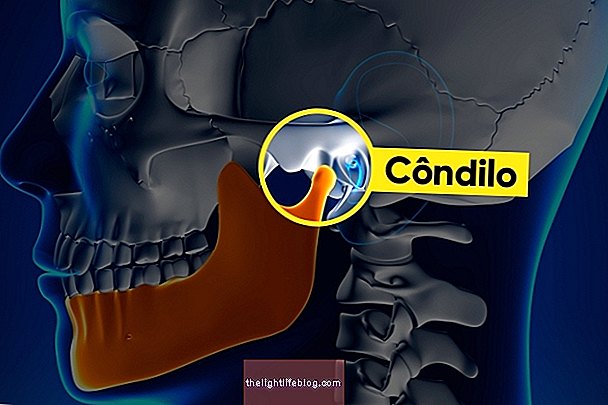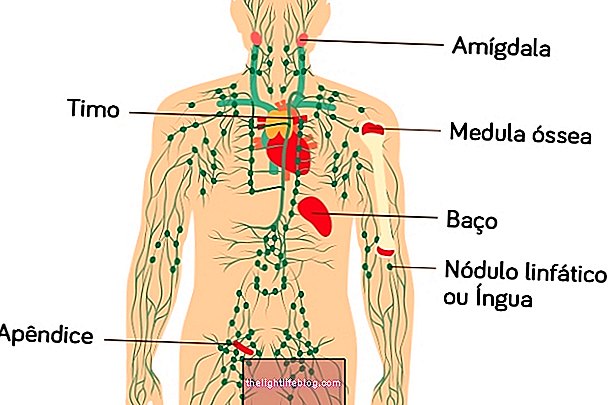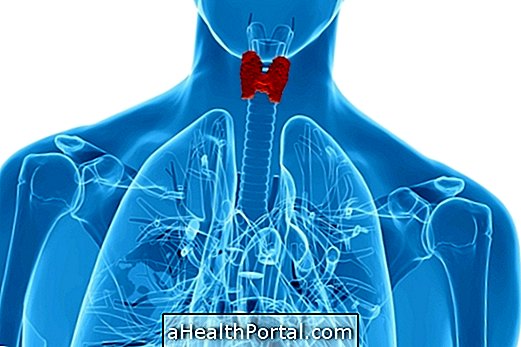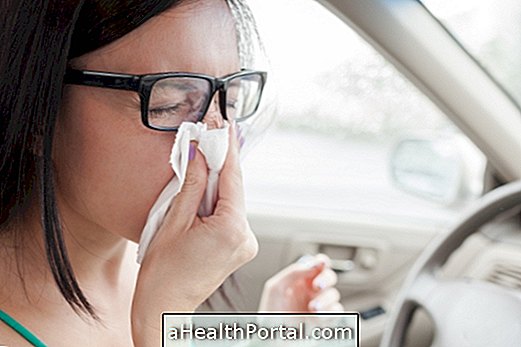Yellow phlegm usually appears when there is an infection in the respiratory system caused by bacteria, such as sinusitis or pneumonia, for example.
This is because, when there are bacteria developing in the throat or lungs, the transparent mucus, which is normally found in the respiratory system, becomes thicker, to stick to microorganisms and eliminate them from the body through coughing.
When yellow phlegm appears, especially accompanied by other symptoms, such as fever, sore throat or shortness of breath, it is important to consult a doctor so that you can identify the cause of the symptoms and start the appropriate treatment.

Some of the most common causes of yellow phlegm are:
1. Pharyngitis
Another cause of yellow phlegm is bacterial pharyngitis, which is characterized by inflammation of the pharynx. Due to the presence of bacteria, in addition to the phlegm, other symptoms may arise such as severe sore throat, difficulty swallowing, fever and headache. Know the main symptoms of pharyngitis and how to treat it.
What to do: in case of suspected pharyngitis, it is important to consult the general practitioner so that the symptoms are evaluated and the most appropriate treatment can be indicated, which is usually done with antibiotics, anti-inflammatories and analgesics, which reduce inflammation pharynx, relieve pain and decrease fever.
2. Sinusitis
The presence of yellow phlegm may be associated with bacterial sinusitis, which occurs due to inflammation of the sinuses caused by bacteria.
In these cases, in addition to the phlegm, it is normal for other symptoms to appear, such as frequent runny nose, fever, headache and difficulty breathing due to a stuffy nose. Know the symptoms of bacterial sinusitis and the treatment.
What to do: The treatment of bacterial sinusitis should be indicated by the otorhinolaryngologist after an evaluation of the symptoms, but the use of antibiotics is usually indicated. In addition, it may be recommended to inhale the water vapor to help unblock the nose, allowing for better breathing.
Watch the video on other home remedies for sinusitis:

3. Bronchitis
Yellow phlegm can appear in case of bacterial bronchitis, as the bronchi become inflamed and produce a thicker phlegm to eliminate bacteria through coughing.
When there is bronchitis, in addition to yellow phlegm, it is normal for other symptoms to appear, such as coughing, shortness of breath, fever and tiredness. Understand everything about bronchitis, symptoms, causes and treatment.
What to do: When the phlegm is associated with other signs of bronchitis, it is important to consult a pulmonologist to assess the symptoms and indicate which treatment is most suitable, which is usually done with bronchodilator, anti-inflammatory, corticosteroid and expectorant drugs. In addition, it is important to drink plenty of fluids to help the mucus come out more easily.
4. Pneumonia
Bacterial pneumonia is usually not contagious and can be one of the causes of yellow phlegm as it is characterized by the presence of bacteria in the lungs.
In addition to yellow phlegm, pneumonia can also cause other symptoms such as fever, chest pain, difficulty breathing and a cough that eliminates bacteria from the lungs.
What to do: Pneumonia treatment is done with antibiotics and must be indicated by the pulmonologist since all symptoms must be evaluated. Check out the treatment for bacterial pneumonia.
5. Pulmonary bronchiectasis
Yellow phlegm can also be associated with pulmonary bronchiectasis, which is a disease in which the bronchi are more dilated, due to airway obstruction or due to the presence of bacteria, which causes the production of thicker mucus.
One of the main symptoms of bronchiectasis is phlegm, however, other symptoms such as coughing up blood, shortness of breath, general malaise and chest pain are common.
What to do: although pulmonary bronchiectasis has no cure, it is possible to have a treatment, indicated by the pulmonologist, which helps to reduce symptoms, relieving discomfort. Treatment can be done with antibiotics and bronchodilators, which facilitate breathing. See what pulmonary bronchiectasis is and how it is treated.
Was this information helpful?
Yes No
Your opinion is important! Write here how we can improve our text:
Any questions? Click here to be answered.
Email in which you want to receive a reply:
Check the confirmation email we sent you.
Your name:
Reason for visit:
--- Choose your reason --- DiseaseLive betterHelp another personGain knowledge
Are you a health professional?
NoMedicalPharmaceuticalsNurseNutritionistBiomedicalPhysiotherapistBeauticianOther
Bibliography
- WINDFUHR, Jochen et al. Clinical practice guideline: tonsillitis I. Diagnostics and nonsurgical management. NCBI. 273. 4; 973–987, 2016
- VIRTUAL HEALTH LIBRARY OF THE MINISTRY OF HEALTH. Sinusitis. 2011. Available at:. Accessed on 02 Mar 2021
- KINKADE, Scotte; LONG, Natalie. Acute Bronchitis. Am Fam Physician. 94. 7; 560-565, 2016
- NHS. NATALIE A. LONG. 2017. Available at:. Accessed on 02 Mar 2021
- SHEPHERD, Eileen. Specimen collection 4: procedure for obtaining a sputum specimen. Nursing Times. 113. 10; 49-51, 2017
- SCIENCEDIRECT. Sputum. Available in: . Accessed on 02 Mar 2021
- VIRTUAL HEALTH LIBRARY OF THE MINISTRY OF HEALTH. CHRONIC RESPIRATORY DISEASES. 2010. Available at:. Accessed on 02 Mar 2021
- MEDICAL NEWS TODAY. What can sputum tell us?. Available in: . Accessed on 02 Mar 2021
- HEALTHLINE. Yellow, Brown, Green, and More: What Does the Color of My Phlegm Mean?. Available in: . Accessed on 02 Mar 2021
- VERYWELL HEALTH. What Causes the Amount of Sputum to Increase?. Available in: . Accessed on 02 Mar 2021


